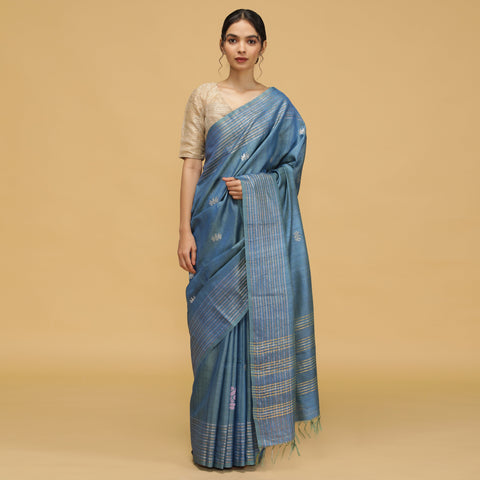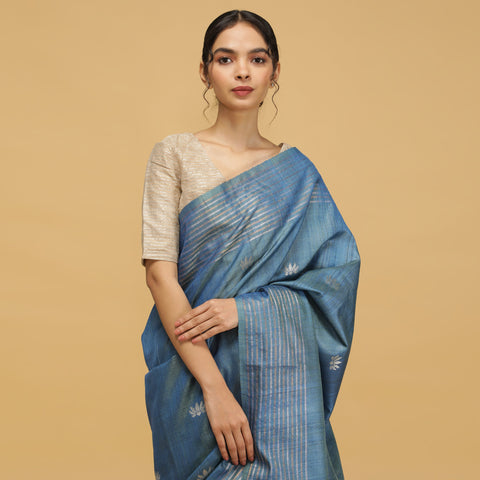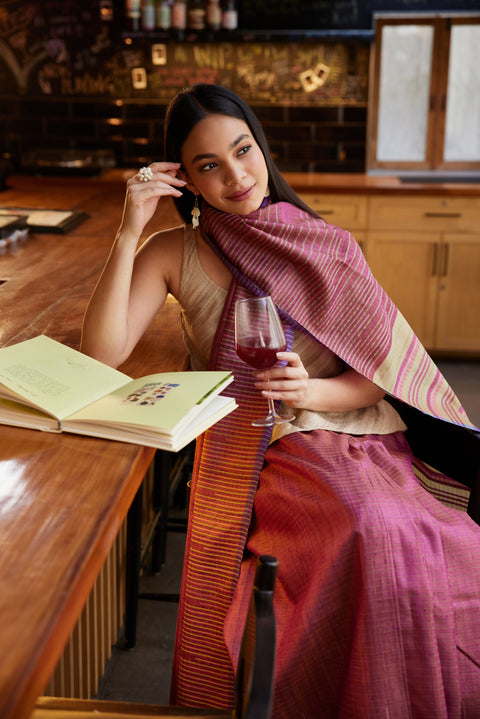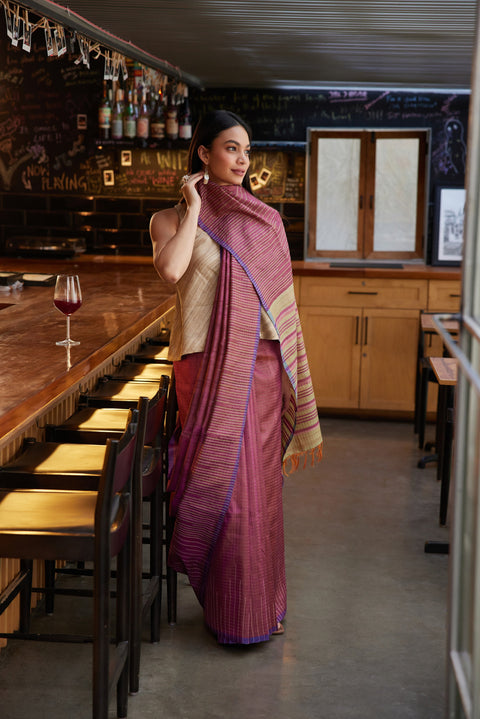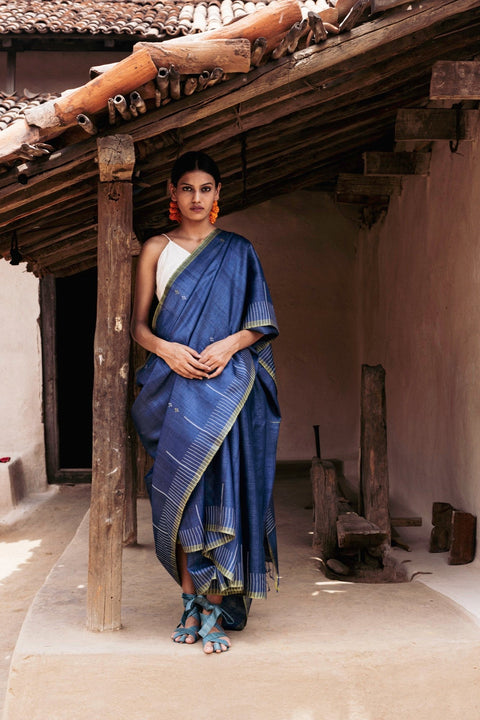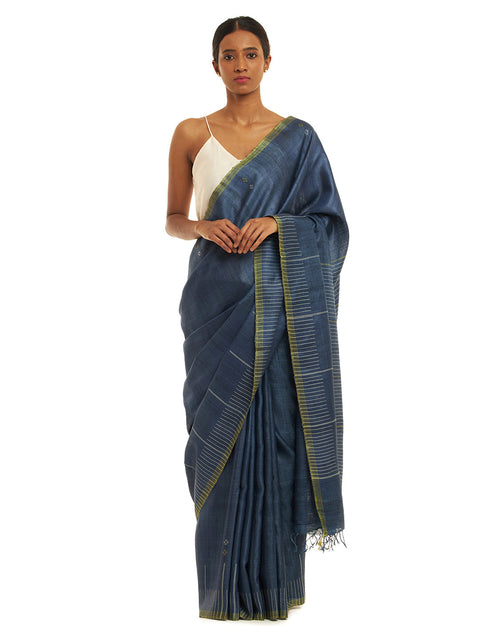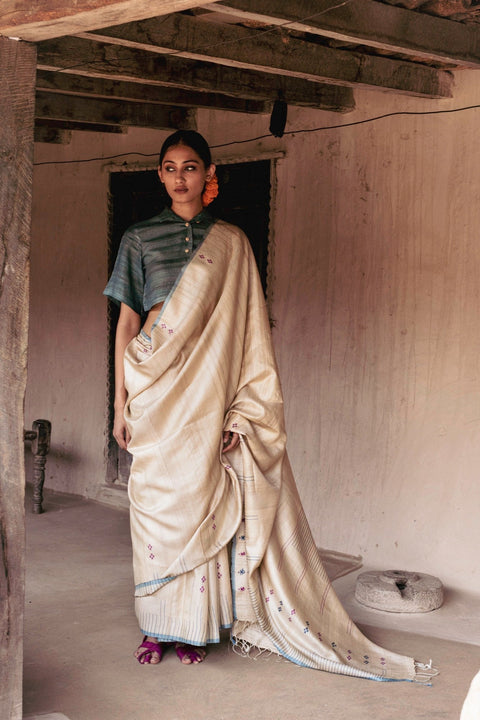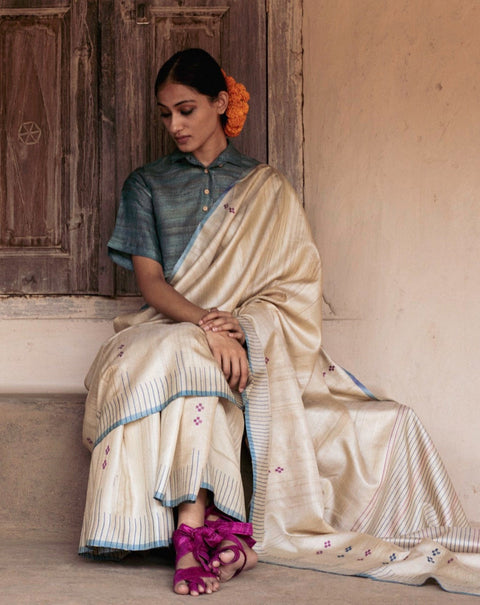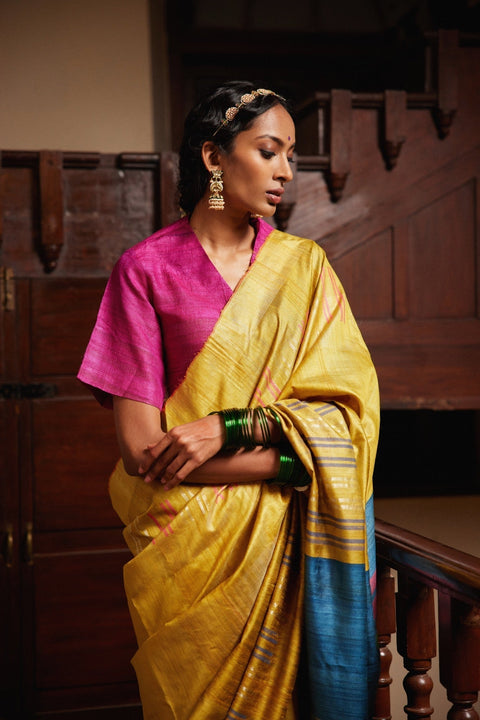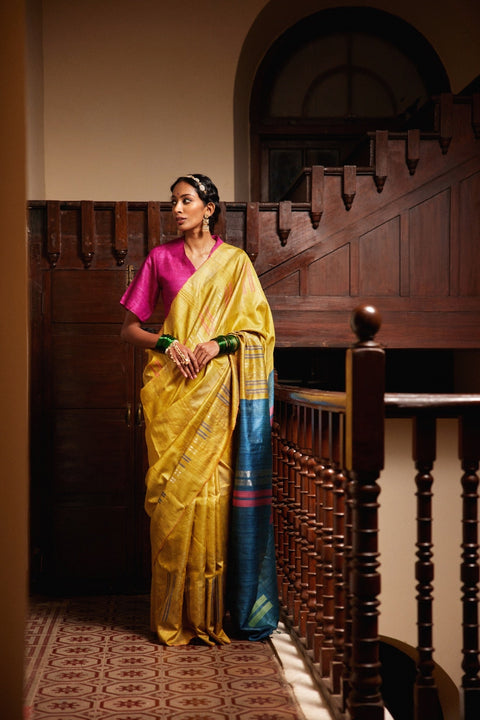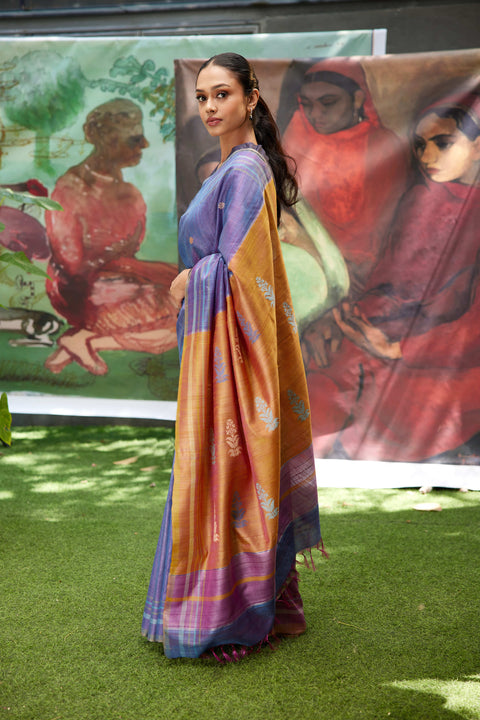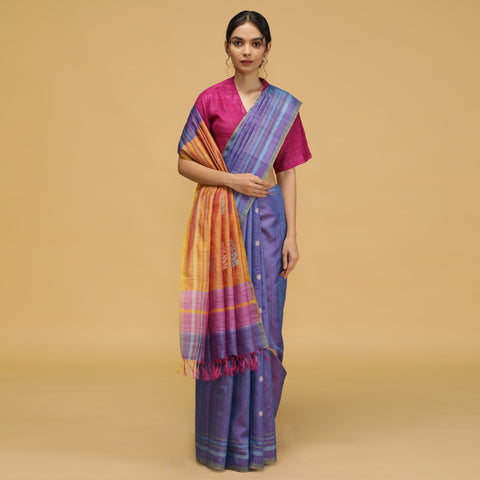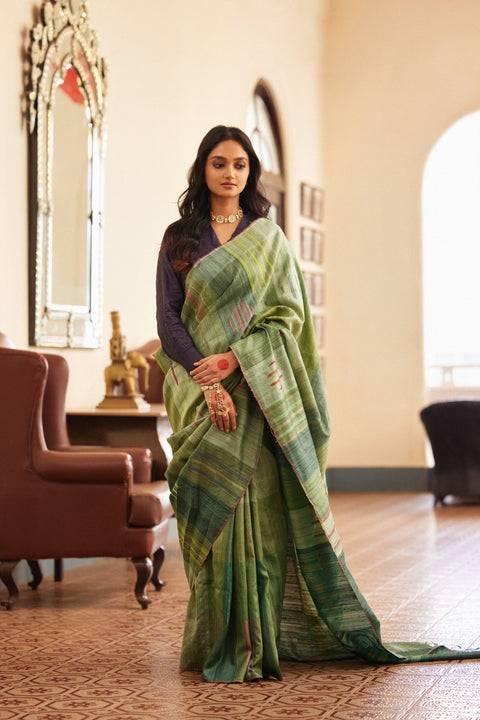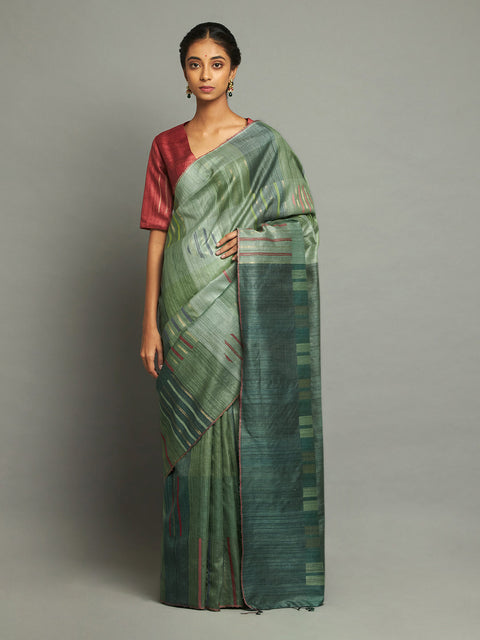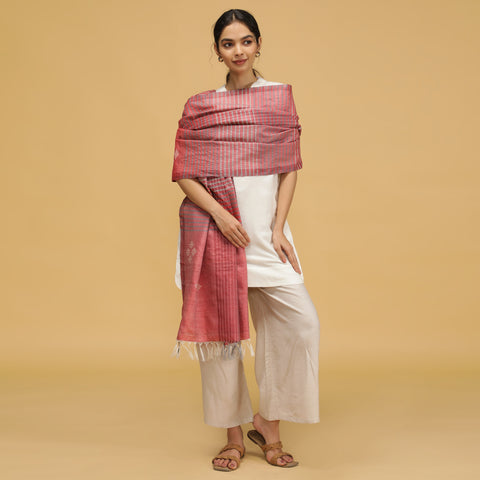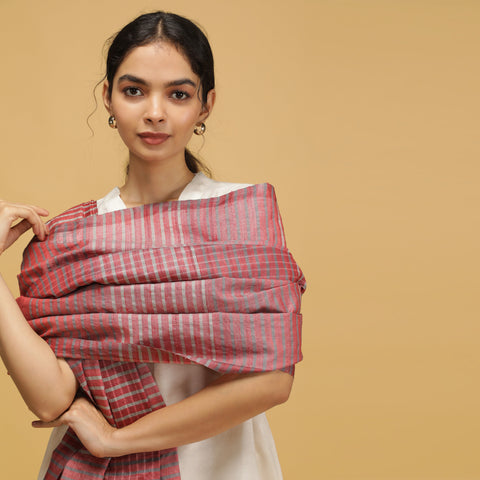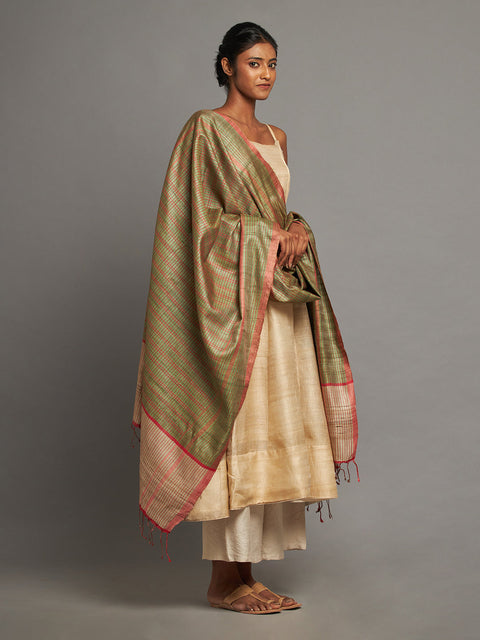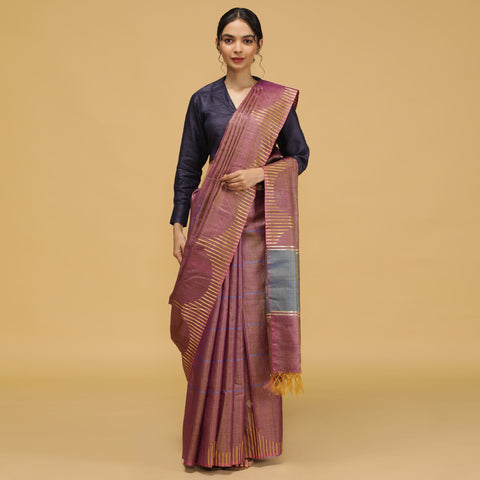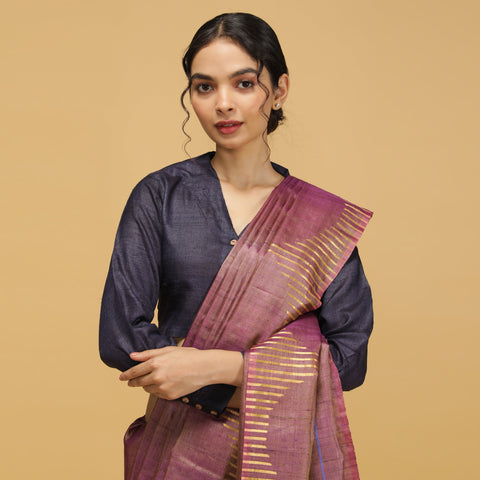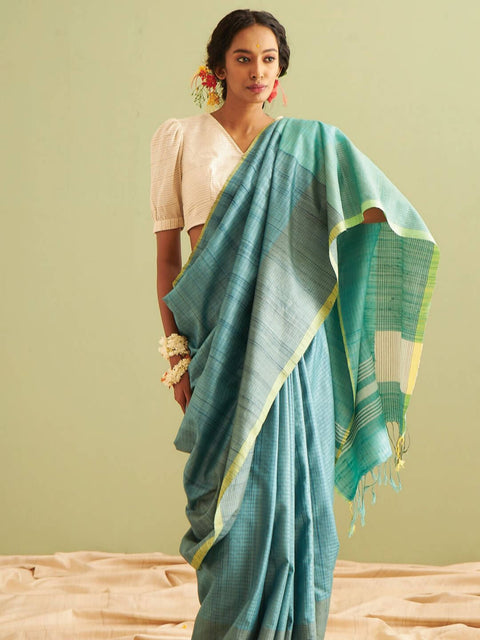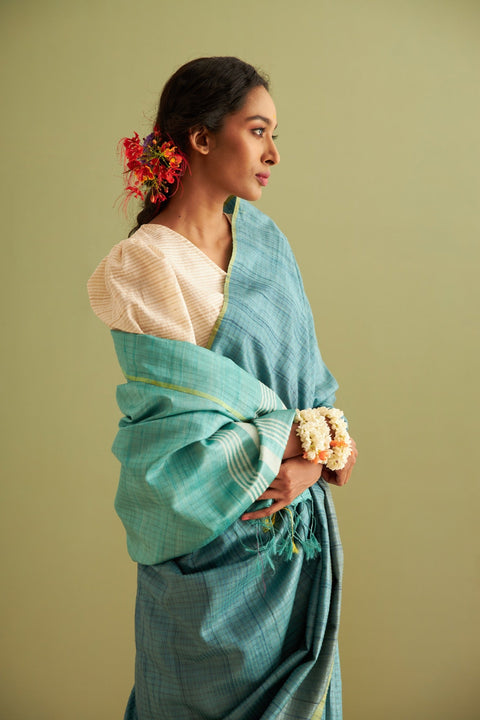
Table of Contents
The beauty of silk sarees is everlasting. But in today’s sprint-y fashion industry, it’s getting harder to tell what’s genuine and what’s mass-produced. Kosa silk, one of India's finest silks, is unfortunately no different in this confusion. The rise of powerloom replicas has blurred the line, making it tricky for buyers to identify a true handloom wonder.
If you’ve ever wondered about the difference between handloom and powerloom, this guide has all the answers you need. When you’re done, you’ll know exactly how to choose authentic Handloom silk sarees and avoid machine-made lookalikes.
Why Kosa Silk Deserves the Spotlight
Kosa silk is widely famous for its natural golden sheen and for being lightweight. Originating from Chhattisgarh, Kosa silk is soft and easy to drape while also being durable, making it perfect for everyday wear and more than perfect for grand endeavours. Over the years, one of India’s finest silks has attracted more than just the locals – it has garnered global fans too.
With demand through the roof, powerloom manufacturers have started copying designs at faster paces and lower costs. Where does this lead? Markets are drowned with lookalikes that lack the soul, flair and longevity of the real Kosa silk.
This is where the difference between handloom and powerloom is critical knowledge.
Handloom vs Powerloom: The Big Difference
At the end of the day, the difference between handloom and powerloom lies in craftsmanship. Handloom weaving is entirely human-made, meaning artisans spend days or even weeks to create a single saree. Each piece carries subtle mismatches, which are its proof of authenticity.
On the other hand, powerloom sarees are machine-made. They may look perfect, but that perfection is just a testament to the lack of personality of the fabric. The drape doesn’t sit the same, the texture is nonexistent, and the overall result is just another piece of clothing.
How to Identify a Genuine Handloom Kosa Silk Saree
Here are a few foolproof tips to help you distinguish between the two:
1. Look for Irregularities
A true handloom Kosa silk saree will have imperfections. Subtle differences in the weave, minor thread knots, or uneven patterns are all signs of the effort. These are not flaws; they’re the significance of artistry.
2. Feel the Fabric
Kosa silk feels rich, soft, and slightly textured against your hand. Powerloom sarees, on the contrary, feel unnaturally smooth and very synthetic-like. Go with the feel when you run your hand over the fabric.
3. Check the Selvedge and Pallu
Authentic handloom sarees’ edges (selvedge) and the pallu often carry a peculiar finish, sometimes slightly flawed, proving it wasn’t made by a machine.
4. Test the Weight and Drape
One of the most evident differences between handloom and powerloom sarees is how they drape. Handloom Kosa silk is lightweight but the drapes still firmly sit on the body, whereas machine-made versions are often limp and lack firmness.
5. Look for Certifications
Reputed sellers often provide Handloom Mark or Silk Mark certifications, ensuring legitimacy. If the saree doesn’t come with one of these certifications, it might not be worth it.
Why Handloom Still Wins
The difference between handloom and powerloom isn’t just fashion knowledge. It’s about choosing real over rush. Handloom sarees support local artisans, keep centuries-old traditions running, and ensure that your investment is worth it.
For example, a handloom kosa saree is more than just clothing. It is a story woven into the fabric. Every motif has meaning, every stitch reflects patience, and every drape celebrates tradition. The machine-made version cannot compare to the soul in handloom sarees.
The Longevity Factor
One of the biggest advantages of owning a Kosa silk saree is its longevity. With proper care, it can easily last decades, making it a true heirloom piece. Unlike powerloom versions that fade, lose sheen, or tear easily, Kosa silk matures gracefully, getting softer and richer with time.
Think of it not just as a purchase but as an investment—an investment in craftsmanship, tradition, and sustainability.
Sustainability Matters
In an era where fast fashion dominates, making conscious choices matters. Opting for handloom sarees supports local weavers and keeps eco-friendly practices alive. The slow process of weaving uses less energy, involves ethical sourcing, and produces fabrics that are kinder to the planet.
When you choose a handloom saree, you’re not just wearing silk—you’re wearing responsibility.
At Kosala: Tradition Meets Trust
At Kosala, we understand the confusion buyers face in distinguishing the difference between handloom and powerloom sarees. That’s why every piece in our collection comes with authenticity you can trust.
We ensure:
-
Ethical sourcing of Kosa silk from traditional weavers.
-
Handloom weaving techniques that have been passed down for generations.
-
Fair wages and recognition for local artisans.
-
Certified authenticity with every saree you buy.
Our collection of silk sarees is not just fashion—it’s a legacy.
Conclusion
In today’s world, flooded with machine-made imitations, it’s easy to get lost. But once you understand the difference between handloom and powerloom, you’ll never look at a saree the same way again.
A genuine kosa silk saree carries more than beauty. It carries history, patience, and tradition. It lasts longer, drapes better, and holds memories across generations. Powerloom versions may tempt you with price and availability, but they will never capture the essence of true craftsmanship.
So, the next time you see a saree that takes your breath away, pause for a second and look closer. If it carries the imperfections of human hands and the soul of tradition, you’ve found the real deal.
Be it a soft gold, earthy tones, or even a striking Blue handloom saree, make your choice one that stands the test of time.
Because true beauty isn’t in perfection, it's in authenticity.



